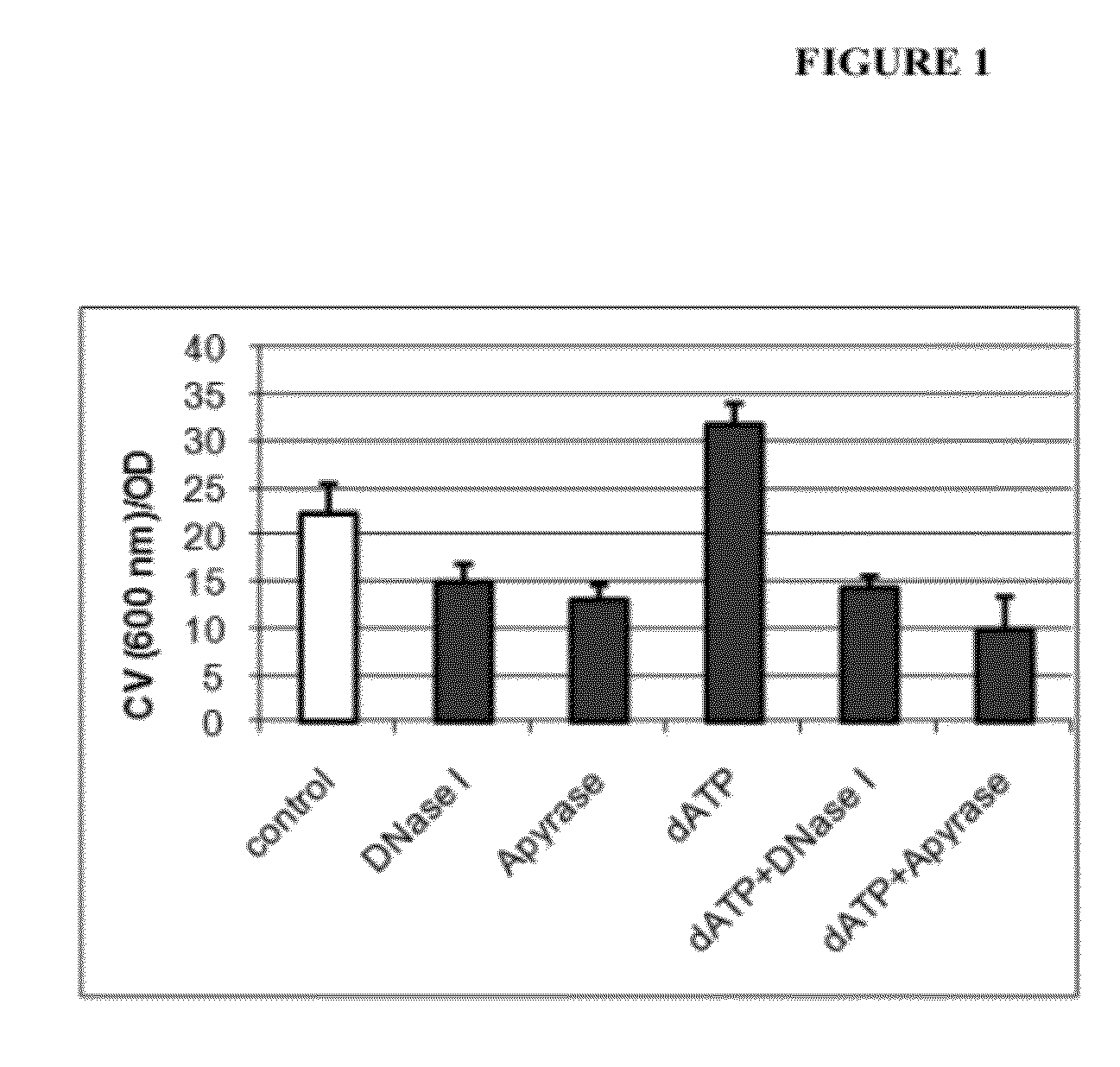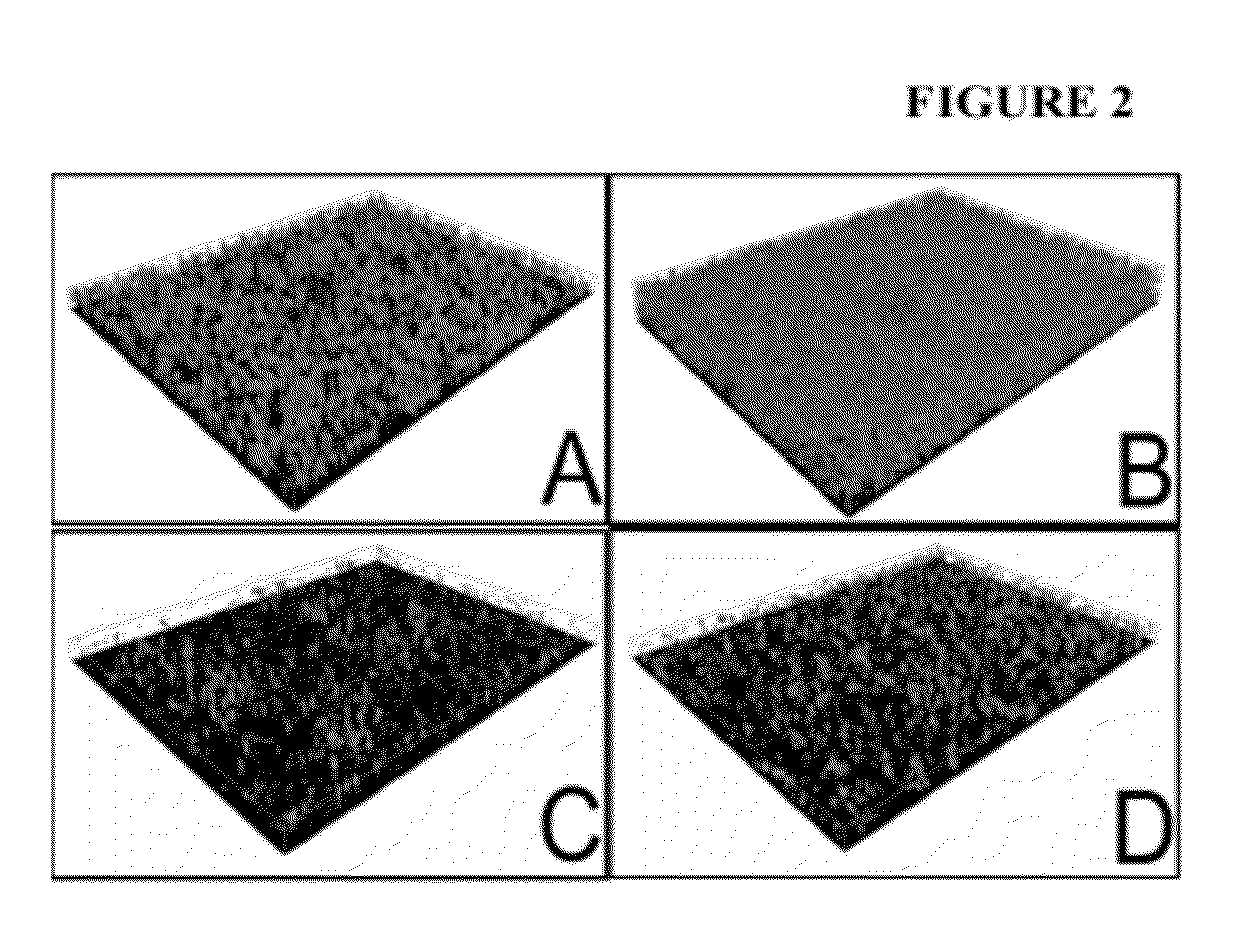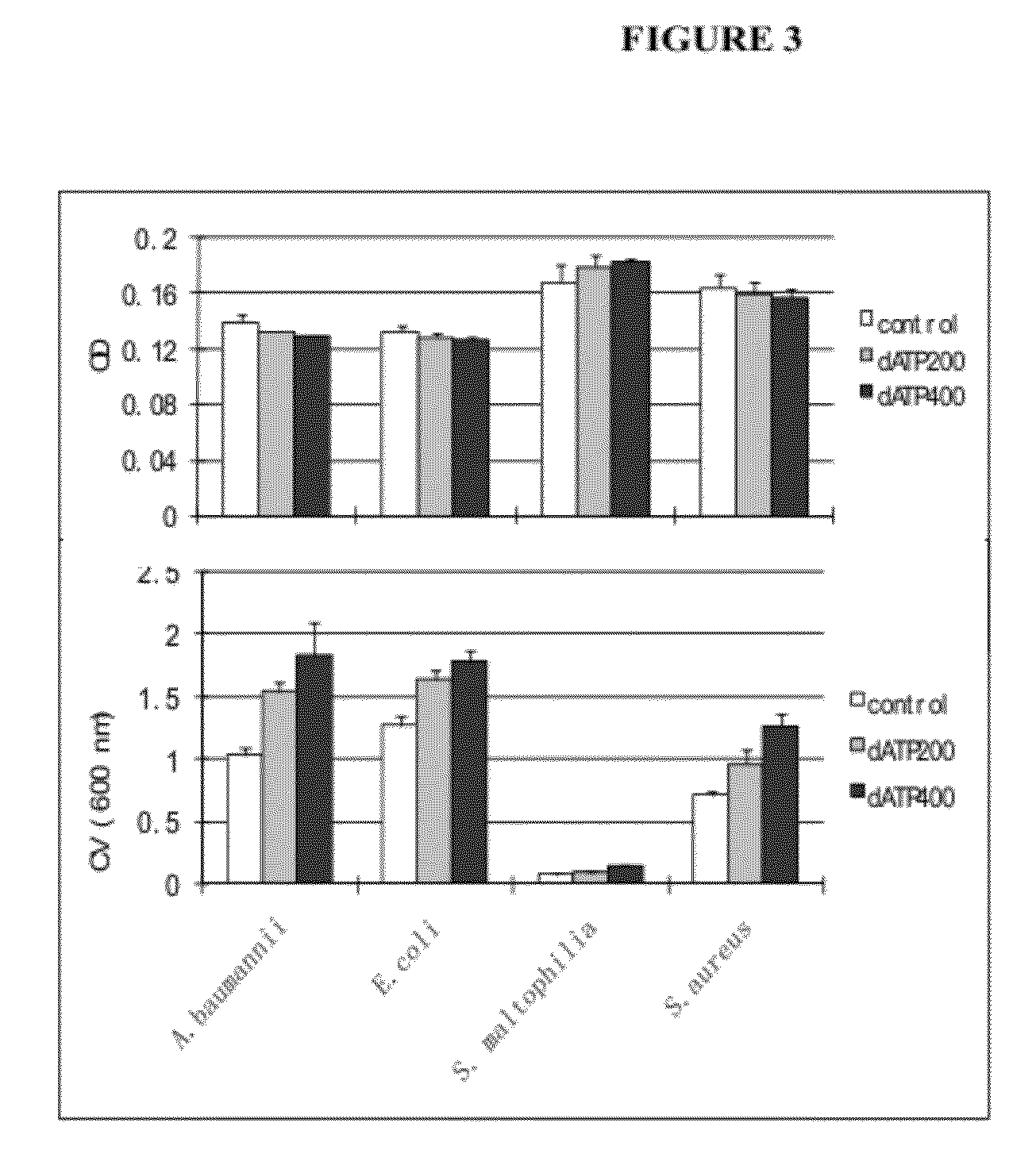Control of biofilm formation
a biofilm and biofilm technology, applied in the direction of biocide, peptide/protein ingredients, catheter, etc., can solve the problem of reducing the biomass of biofilm
- Summary
- Abstract
- Description
- Claims
- Application Information
AI Technical Summary
Benefits of technology
Problems solved by technology
Method used
Image
Examples
example 1
Biofilm Growth Affected with dATP or Apyrase Treatment
[0115]Experiments conducted during the course of developing some embodiments of the present invention showed that treatment with dATP stimulated biofilm biomass (FIGS. 1 and 2). Conversely, treatment with apyrase caused reduced biomass in Acinetobacter biofilms (FIGS. 1 and 2).
[0116]Similarly, treatment of S. aureus, E. coli, and S. maltophilia with 400 μM dATP was correlated with increased biofilm formation (FIG. 3).
[0117]Methods:
[0118]Overnight LB-grown culture was diluted 100 times with 10% LB medium, and 100 μL of the dilution was inoculated into each well of 96-well plates. dATP, dGTP, DNase I, or apyrase was added into wells to result in the desired concentrations. An equivalent volume of 10% LB medium was added into wells as control. Plates were covered with lids and incubated at 30° C. for 16 hours before optical density (OD) was measured at 600 nm for the record of growth. Fifteen microliters of 0.1% crystal violet solut...
example 2
Effect of dATP Treatment on Attachment, eDNA Release, and Programmed Cell Death in Acinetobacter Biofilms
[0120]Experiments conducted during the course of developing some embodiments of the present invention showed that treatment of Acinetobacter with 125 μM dATP resulted in accelerated rates of attachment in initial biofilm formation as visualized at 2 h, 4 h, and 8 h post-treatment (FIG. 4). The effect of dATP treatment on programmed cell death in biofilm and planktonic forms of Acinetobacter cultures was also examined. In each, dATP-treated cultures showed increased levels of programmed cell death as measured by Cytotox-glo assays at 24 h post-treatment (FIG. 5).
[0121]Stimulation of extracellular DNA (eDNA) was also observed following dATP treatment of Acetinobacter in biofilm and planktonic cultures (FIG. 6), with a more pronounced effect occurring in biofilms.
[0122]Methods:
[0123]Bacterial initial attachment assay: 1% of an overnight culture was inoculated into the wells of 96-we...
example 3
Effect of dATP and Apyrase on Acinetobacter Baumannii Initial Biofilm Adherence in an In Vitro Cell Culture Model of Human Bronchial Epithelial NCI-H292 Cells
[0126]In experiments conducted during the course of developing some embodiments of the present invention, it was found that that supplementing the media with 400 μM of dATP increased A. baumannii adherence about 100-fold (1 hour after incubation) and promoted aggregate formation on human bronchial epithelial cells (FIG. 7). The similar level of increased bacterial adherence was observed when a small portion of human cells were physically damaged (FIG. 7). Increased bacterial adherence was completely arrested by the Apyrase (200 mU / ml) treatment (FIG. 7).
[0127]Methods:
[0128]Bacterial adherence assay was performed as described (Burnstock (2006) Pharmacol. Rev. 58:58-86; herein incorporated by reference in its entirety). Human bronchial epithelial cell line NCI-H292 (ATCC CRL-1848; American Tissue Culture Collection, Rockville, Md...
PUM
| Property | Measurement | Unit |
|---|---|---|
| molecular-mass | aaaaa | aaaaa |
| time | aaaaa | aaaaa |
| volume | aaaaa | aaaaa |
Abstract
Description
Claims
Application Information
 Login to View More
Login to View More - R&D
- Intellectual Property
- Life Sciences
- Materials
- Tech Scout
- Unparalleled Data Quality
- Higher Quality Content
- 60% Fewer Hallucinations
Browse by: Latest US Patents, China's latest patents, Technical Efficacy Thesaurus, Application Domain, Technology Topic, Popular Technical Reports.
© 2025 PatSnap. All rights reserved.Legal|Privacy policy|Modern Slavery Act Transparency Statement|Sitemap|About US| Contact US: help@patsnap.com



